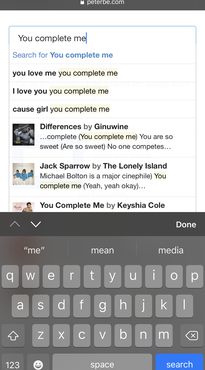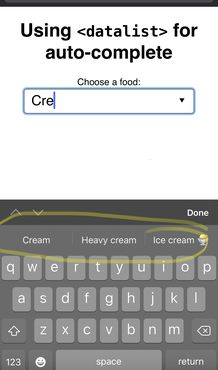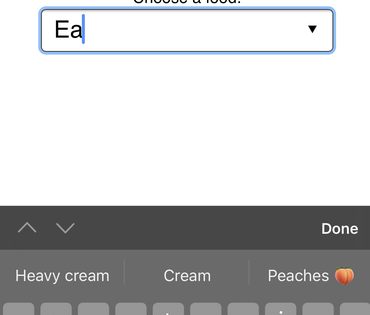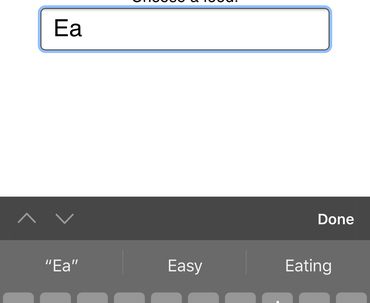<datalist> is an underrated HTML API. It's basically a native autocomplete widget that requires 0 JavaScript.
What I didn't know is how great it is on mobile devices. Especially the iOS Safari platform which is, to be honest, the only mobile device I have.
What's cool about it is that it's easy to implement, from a developer's point-of-view. But most importantly, it works great for users. The problem usually on mobile devices and autocomplete is that it's hard to find a good spot to display the suggestions. Most autocomplete widgets are a styled form of <div class="results"><ul><li>Suggestion 1</li><li>Suggestion 2</li></ul></div> that usually follows the <input> element. Usually, this simply boils down to screen height real estate. Oftentimes you want to display so much more rich stuff in the autocomplete results but it's hard to fit in a nice list of results between the <input> and the native keyboard display. For example, on this page ...

Note how the search results get hidden underneath the keyboard.
Demo
The cool thing about <datalist> is that gets embedded in the native mobile keyboard in a sense. But what's extra cool is that the browser will do an OK job of filtering all the options for you, so that you, as a developer, just need to supply all options and the browser will take care of the rest.
I put together a dead-simple app here: https://cnfyl.csb.app/ (source here) which looks like this on iOS:
Caveats
The space that the keyboard now populates with suggestions is usually reserved for helping you autocomplete regular words. It still does if you start typing a word that isn't an option. So arguably, the <datalist> options are primarily helping you when it's very likely that the user will type one of the suggestions.
The matching isn't great in my opinion. If you type "ea" it will match "Peaches" but I find it extremely unlikely that that's helping users. (What do you think?) If you've started typing "ea" if there's no match called "Each" or "North East" then it's probably better with no match at all.
Mind you, check out this hack (source here) which takes control of the <option> tags inside the <datalist> by having an event listener on the input. So if the input is "ea" it only matches expressions that are left-word-delimited and discard the rest.
Conclusion
It is without a doubt the simplest autocomplete functionality you can buy. I would buy it again.
Perhaps it's not right for every application. Perhaps it's important to be able to include images in your autocomplete suggestions. Either way, the best thing to do is to park this in the back of your mind till next time you're up against the need for some sort of assisted search or choice. Especially if you predict you'll have a lot of users on mobile devices.



Comments